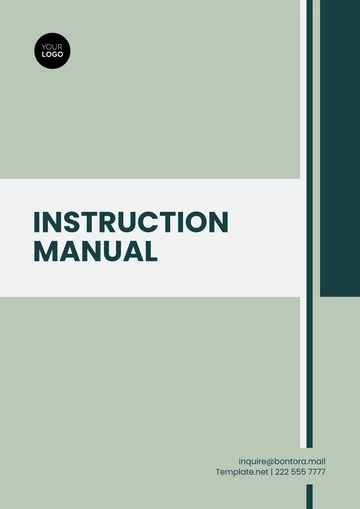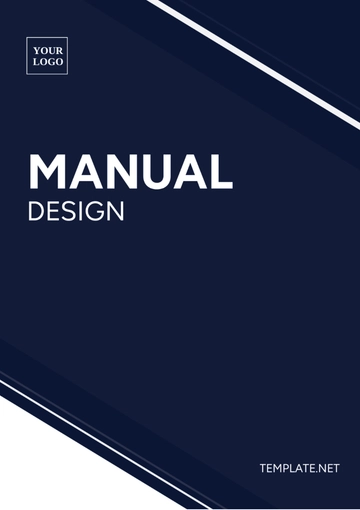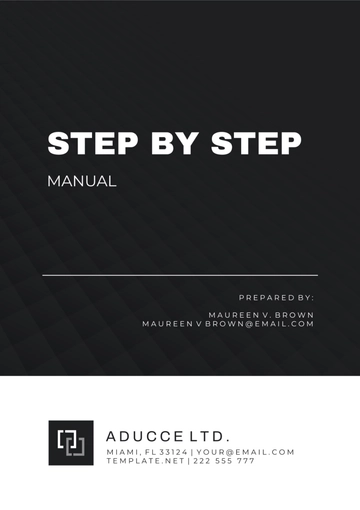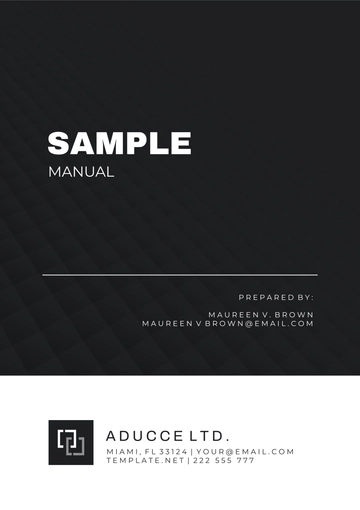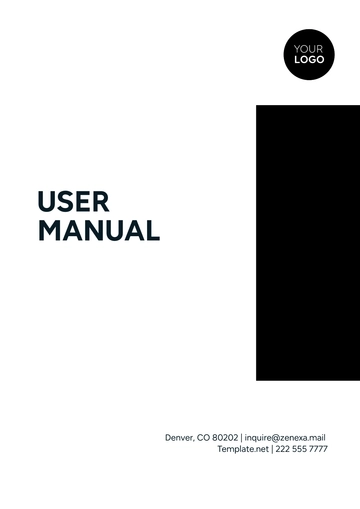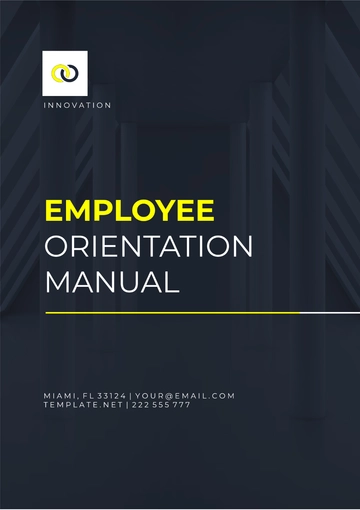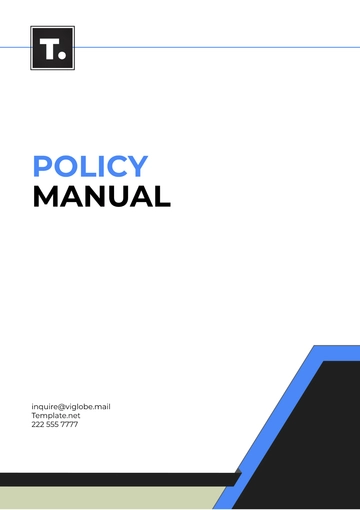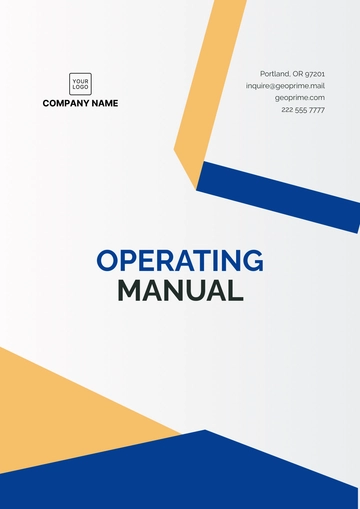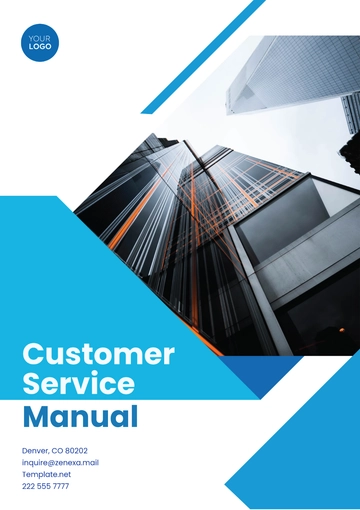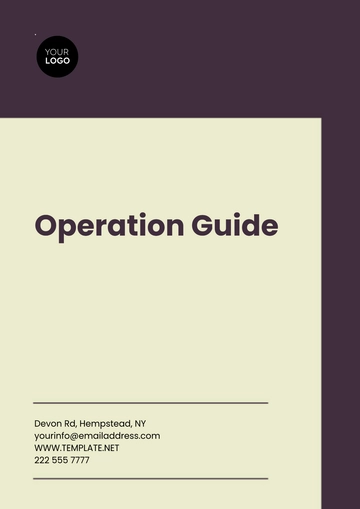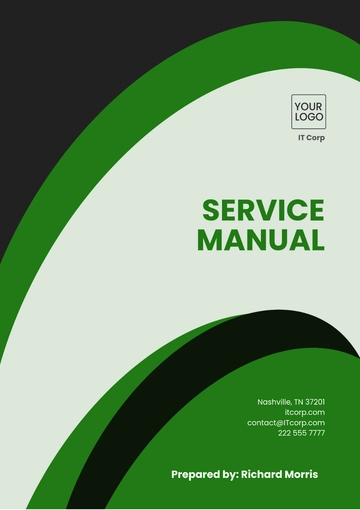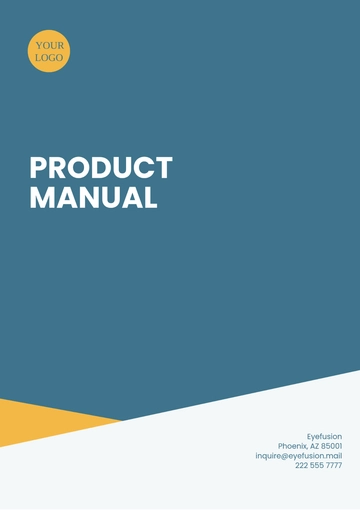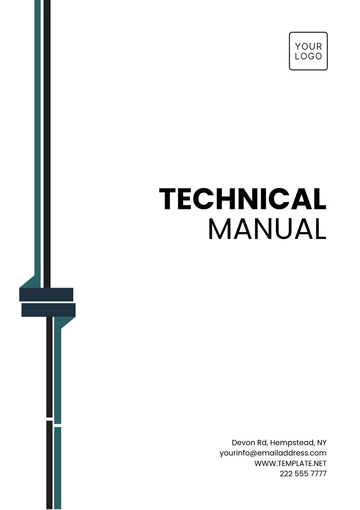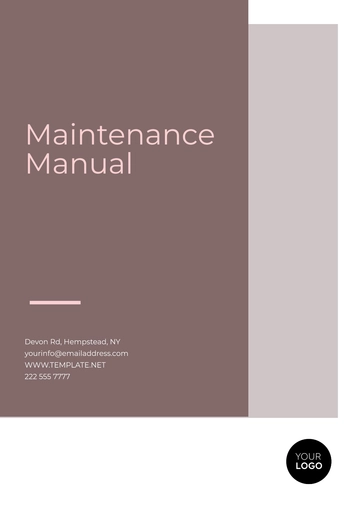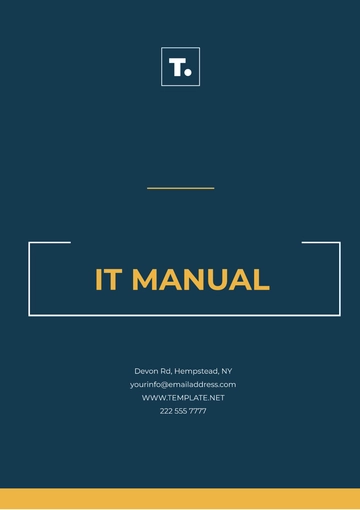Free Training Manual on Post-Sale Relationship Building
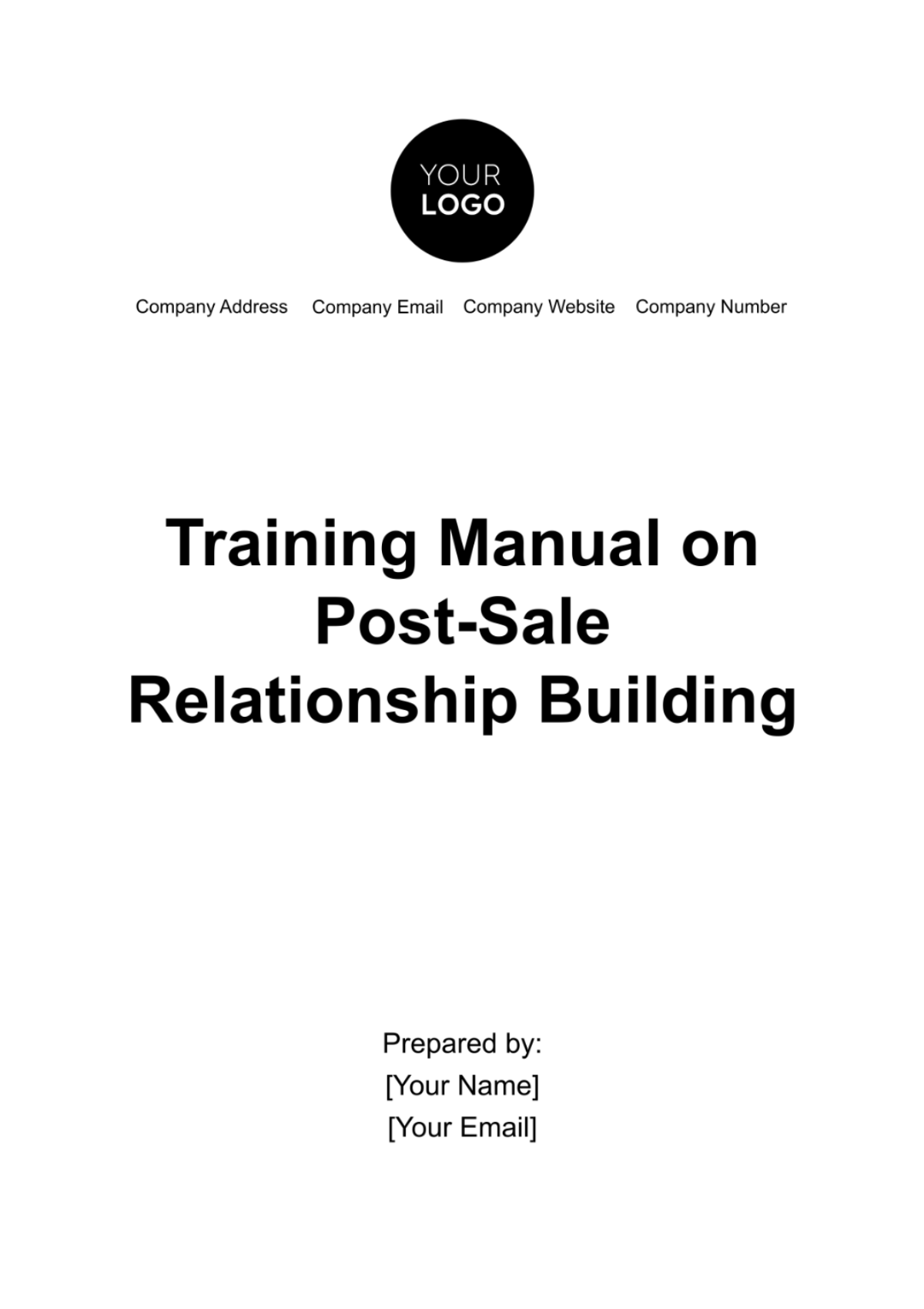
In today's dynamic and competitive business landscape, it's no longer enough to merely make a sale and move on. Building robust, enduring relationships with your customers is now the cornerstone of sustained success. This comprehensive manual is your guide to mastering the art of post-sale relationship building, equipping you with the essential knowledge and actionable strategies necessary to cultivate deep connections with your clientele. By doing so, you'll not only ensure customer satisfaction but also foster unwavering loyalty, turning one-time buyers into lifelong advocates and sources of repeat business.
In the pages that follow, you'll explore the critical elements of post-sale relationship building, from understanding customer needs and expectations to effective communication, trust development, and handling challenging situations with finesse. You'll learn how to personalize interactions, create tailored solutions, and harness feedback for continuous improvement. We'll delve into loyalty programs and exclusive offers, demonstrating how these tools can be harnessed to nurture customer bonds. With these skills and insights, you'll be well on your way to becoming a master in the art of post-sale relationship building, ensuring both your personal and organizational success.
I. Understanding Post-Sale Relationship Building
In the world of business, it's imperative to recognize that the sale represents just the initial transaction, not the conclusion. Successful businesses understand that cultivating post-sale relationships with customers is an ongoing process that holds the potential for long-term profitability and customer loyalty. This page will delve deeper into the core concepts of post-sale relationship building to ensure that you grasp the intricacies of this essential skill.
A. Transitioning from Sales to Relationships
Shifting Your Perspective: In the pre-sale phase, the focus is on closing deals, while post-sale, the focus shifts towards nurturing and maintaining relationships. This change in perspective is fundamental.
From Transaction to Interaction: Help your team understand that a customer's value goes beyond a single purchase. It extends to the potential for multiple transactions, referrals, and a lasting association.
B. The Customer's Perspective
Meeting Customer Expectations: Customers expect more than just a product or service; they want a seamless, personalized experience.
The Post-Sale Experience: A customer's perception of your business is significantly influenced by their post-sale experience. Make sure it's a positive one.
C. Benefits of Post-Sale Relationship Building
Enhanced Loyalty: Satisfied customers are more likely to become repeat buyers and brand advocates.
Word-of-Mouth Marketing: A happy customer can be your most effective marketing channel, recommending your products or services to friends, family, and colleagues.
Feedback and Improvement: Post-sale relationships provide valuable insights that can be used to enhance your offerings.
D. The Customer Lifecycle
Awareness and Acquisition: At the beginning of the customer lifecycle, your goal is to make potential customers aware of your products or services and convert them into buyers.
Retention and Loyalty: In the post-sale phase, the focus shifts to retaining these customers and turning them into loyal supporters of your brand.
Advocacy: Loyal customers may become advocates who actively promote your business.
E. Measuring Success
Metrics for Post-Sale Relationship Building: Consider key performance indicators such as customer satisfaction scores, Net Promoter Score (NPS), and customer retention rates to measure the effectiveness of your efforts.
Customer Lifetime Value (CLV): Understanding CLV helps you assess the long-term profitability of your relationships with customers.
II. The Importance of Customer Satisfaction
In the business world, customer satisfaction is the cornerstone of long-lasting relationships and is an indispensable metric for measuring the success of any organization. This page delves deeper into the significance of customer satisfaction and outlines how it plays a pivotal role in building enduring relationships with your customers.
A. Understanding Customer Satisfaction
Customer satisfaction is the ultimate indicator of how well your products or services meet the needs and expectations of your clientele. When customers are satisfied, they are not only more likely to become loyal patrons, but they also often become brand advocates, recommending your business to friends, family, and colleagues.
B. The Ripple Effect
Satisfied customers create a ripple effect. They spread positive word-of-mouth, write glowing reviews, and engage in repeat business. As a result, customer satisfaction isn't just about the individual sale; it's about the potential for exponential growth. It can turn a one-time transaction into a lifelong partnership.
C. Building Trust and Loyalty
Satisfied customers are more likely to trust your business and return for additional purchases. Trust forms the bedrock of any relationship, and customer satisfaction is a key factor in building and maintaining that trust. In turn, trust contributes significantly to customer loyalty, which is invaluable for your business's long-term success.
D. Measuring and Monitoring Satisfaction Levels
Understanding and measuring customer satisfaction is a vital aspect of post-sale relationship building. There are several methods to do this, such as:
Surveys and Feedback Forms: Create and distribute customer satisfaction surveys to collect direct feedback from your customers. Analyze the responses to identify areas for improvement.
Net Promoter Score (NPS): NPS measures the likelihood of customers recommending your business to others. It's a simple but effective way to gauge overall satisfaction.
Customer Reviews and Ratings: Pay attention to online reviews and ratings on platforms like social media, review websites, or your own website. These can provide valuable insights into customer satisfaction.
Customer Support Interactions: Analyze interactions with your customer support team, looking for patterns in inquiries, complaints, and compliments to gauge customer satisfaction.
E. The Continuous Quest for Improvement
Customer satisfaction isn't static. It's an ongoing journey. Regularly measuring and monitoring satisfaction levels allows you to identify areas that require improvement and to make necessary adjustments to your products, services, and customer support. This demonstrates your commitment to providing an exceptional customer experience, which in turn nurtures long-term relationships.
III. Effective Communication
Communication is the bedrock of any relationship, and when it comes to post-sale relationship building, it takes on even greater importance. Clear and timely communication is not just a good practice; it's essential to ensure your customers feel valued and supported throughout their journey. This page delves deeper into the nuances of effective communication and provides you with actionable insights to enhance your communication skills.
A. Active Listening
Active listening is a fundamental aspect of effective communication. It involves more than just hearing what your customer is saying; it means fully understanding and empathizing with their needs, concerns, and desires. To become a better active listener:
Maintain eye contact: Show that you're fully engaged in the conversation by maintaining appropriate eye contact, whether it's in-person or through video calls.
Use open-ended questions: Encourage customers to express themselves more freely by asking open-ended questions that invite detailed responses.
Paraphrase and summarize: Repeat back what the customer has said in your own words to ensure you've understood their points correctly.
Avoid interrupting: Resist the urge to interrupt while the customer is speaking. Let them finish before you respond.
B. Responding to Customer Inquiries
Timely and informative responses to customer inquiries are crucial for maintaining their trust and satisfaction. Here are some best practices:
Acknowledge promptly: Acknowledge every customer inquiry, even if you don't have an immediate solution. A simple acknowledgment lets them know their message has been received and is being addressed.
Provide detailed responses: When answering inquiries, aim for thorough and clear responses that address all aspects of the customer's question or concern.
Offer solutions, not excuses: Focus on finding solutions rather than making excuses. Even if the issue is challenging, customers appreciate a proactive approach to resolving problems.
Keep the customer updated: If a resolution is taking time, update the customer regularly to keep them in the loop. Transparency goes a long way in building trust.
C. Setting the Right Expectations
Setting and managing customer expectations is essential for avoiding disappointment and fostering trust. To set the right expectations:
Be honest about product capabilities: Don't oversell your product or service. Be clear and transparent about what it can and cannot do.
Communicate delivery timelines: If applicable, provide realistic delivery timelines and ensure that they are met. If there are delays, inform the customer promptly.
IV. Personalization and Customization
In the world of post-sale relationship building, recognizing that every customer is unique is not just a truism but a cornerstone of success. This page will delve deeper into the art of personalization and customization, exploring their profound impact on customer relationships and how you can use them to your advantage.
A. Benefits of Personalization and Customization
Enhanced Customer Satisfaction: Tailoring your interactions and offerings to individual customer preferences shows that you genuinely care about their needs. When customers feel understood and valued, their satisfaction soars.
Increased Customer Loyalty: Personalization creates a sense of belonging and strengthens the bond between you and your customers. As a result, they are more likely to return for future purchases and become loyal advocates of your brand.
B. Strategies for Effective Personalization and Customization
Segmentation: Divide your customer base into segments based on factors like purchase history, demographics, or behavior. This allows you to create personalized marketing and communication strategies for each group.
Recommendation Engines: Implement recommendation algorithms that suggest products or services based on a customer's past purchases or browsing history. These algorithms help customers discover relevant items they might have overlooked.
Personalized Offers: Craft personalized offers, discounts, or promotions tailored to each customer's preferences. This not only entices them to make additional purchases but also makes them feel valued.
Tailored Communication: Adjust your communication style and frequency based on individual preferences. Some customers prefer email updates, while others may prefer text messages or phone calls. Respect their choices.
Feedback and Surveys: Encourage customers to provide feedback and preferences through surveys or questionnaires. Analyzing this information can help you fine-tune your personalization strategies.
Engage in Active Listening: When interacting with customers, actively listen to their needs and desires. Remember details about their previous interactions and use this information to enhance their future experiences.
V. Building Trust and Credibility
Building trust and credibility with your customers is not just important; it's fundamental to the success of post-sale relationship building. Trust forms the bedrock of any enduring relationship, including business relationships. To achieve this, you must demonstrate reliability, honesty, and consistency in your interactions. Here's a more detailed look at how to establish trust and credibility:
A. Reliability
Your customers should have faith in your ability to consistently deliver on your promises. This means meeting deadlines, delivering products or services as expected, and providing a reliable point of contact for their inquiries and concerns. Consistency in your performance is key to building trust. When customers know they can rely on you, they are more likely to return and recommend your business to others.
B. Honesty
Honesty is paramount in building trust. Be transparent about your products or services, including their strengths and limitations. Avoid making exaggerated claims or hiding potential issues. If mistakes occur, admit them and take immediate steps to rectify the situation. Honesty, even when it involves acknowledging shortcomings, demonstrates integrity and builds trust with your customers.
VI. Handling Complaints and Resolving Issues
In any business, even with the most meticulous attention to detail, occasional customer complaints and issues are inevitable. These instances can be seen as valuable opportunities rather than obstacles. This page delves into the art of handling complaints and resolving issues with finesse, transforming challenges into chances to fortify the customer relationship.
A. Understanding Customer Complaints
First and foremost, it's crucial to view customer complaints as valuable feedback. By complaining, customers express their concerns, expectations, and desires. This is an opportunity for you to demonstrate your commitment to their satisfaction.
B. Active Listening
When a customer voices a complaint, practice active listening. This involves paying full attention, asking clarifying questions, and empathizing with their perspective. By doing so, you show that their concerns are important to you.
C. Timely Response
Promptness in addressing complaints is essential. Customers appreciate knowing that their issues are a priority. Respond to complaints in a reasonable timeframe, and if it will take longer to resolve, communicate this to the customer with transparency.
D. Resolution with a Smile
Work with the customer to find a resolution that satisfies them. This might involve offering alternatives, refunds, or exchanges. Keep in mind that finding a solution that both parties are content with can further enhance the customer's trust in your business.
E. Documentation
Maintain detailed records of customer complaints and their resolutions. This documentation helps track recurring issues and enables continuous improvement in your products or services. It also demonstrates professionalism and accountability.
F. Empower Your Team
If you're part of a team, ensure that all team members are trained in handling complaints. They should know the protocols and have the authority to resolve issues promptly. This empowers your employees to provide a positive customer experience.
G. Learning from Mistakes
Every complaint is an opportunity to identify areas for improvement. Encourage your team to analyze complaints collectively and make necessary adjustments to prevent similar issues in the future.
- 100% Customizable, free editor
- Access 1 Million+ Templates, photo’s & graphics
- Download or share as a template
- Click and replace photos, graphics, text, backgrounds
- Resize, crop, AI write & more
- Access advanced editor
Discover the ultimate guide to fortify client connections with the Training Manual on Post-Sale Relationship Building Template from Template.net. Crafted by experts, this editable and customizable resource equips you with proven strategies to nurture lasting bonds. With the intuitive AI Editor Tool, tailor your approach effortlessly. Elevate your post-sale game and secure loyalty like never before.
